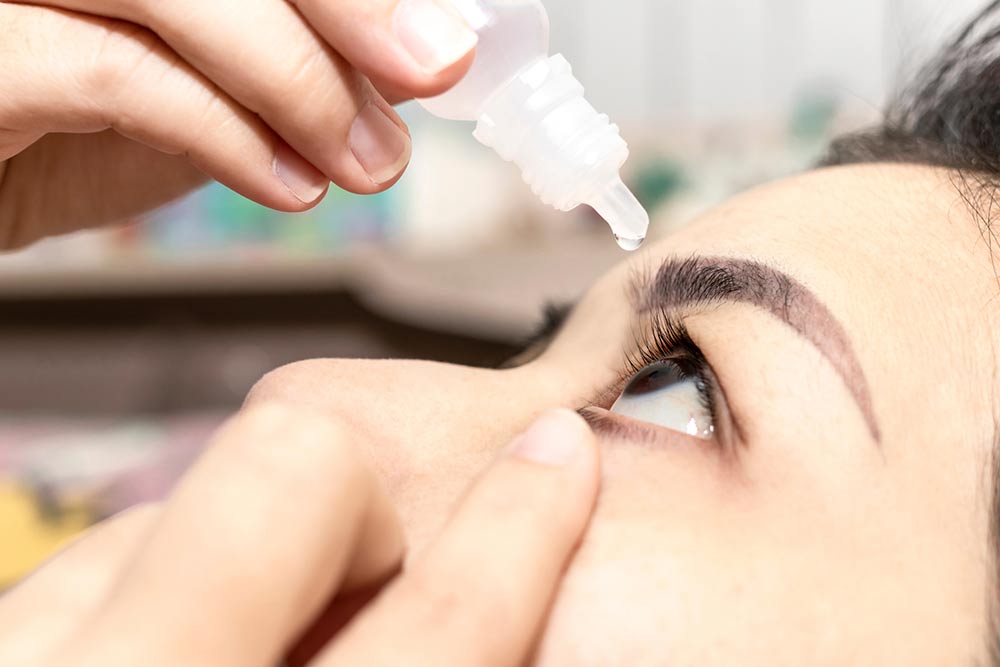8 warning signs of thyroid eye disease

In medical terms, thyroid eye disease (TED) is also called Graves’ eye disease or Graves’ ophthalmopathy. It causes swelling in the eye muscles and affects the connective and fatty tissues behind or around the eyes, making the eye appear bulged or reddened. As the name suggests, TED occurs due to an overactive thyroid gland. There are several risks, early signs, and causes that one should be aware of to receive timely treatment for the condition.
What is TED?
It is an autoimmune eye disorder often triggered by thyroid dysfunction, wherein a person’s immune system targets and attacks the thyroid gland, prompting it to release excessive thyroid hormone. As a result, the thyroid gland enlarges. One usually experiences two phases of the condition. First, an individual may experience an active phase where the inflammation peaks and symptoms worsen, which can last up to three years, followed by the stable phase.
Warning signs of TED
The warning signs of TED may affect both or even a single eye. Here are some of the common signs to look out for:
1. Changes in eye structure
The eyes may bulge out or just generally look out of line. This can also lead to double vision or even blindness in some cases due to the constant pressure of the swelling on the delicate eye nerves at the back. One may also experience ulcers or sores in the cornea or the front of the eye, which can make it difficult to close the eyes completely.
2. The ‘Thyroid Stare’
In many cases, a person may notice that their eyelids are pushed back, and the muscles that enable their movement feel restricted. This can lead to the thyroid stare, where it seems like a patient is staring blankly.
3. Vision impairment
Those experiencing blurry vision, general discomfort in the eye, or vision impairment should get it checked immediately since that may indicate the onset of TED. Blurry vision especially does not seem to get better even with proper rest, moving, blinking, or covering the eyes.
4. Under-eye bags
Bags under the eyes usually result from aging or fluid retention, but in the case of TED, they may occur due to inflammation and swelling of the tissues around the eyes.
5. Various types of eye discomfort
Normal eyes move freely and smoothly, but individuals who find it difficult to do so should get checked for TED. With TED, one may experience either dryness or watery eyes, a feeling of grittiness, or sandiness in the eyes. One may also experience reduced tolerance to bright lights, which did not seem to bother an individual earlier. There may also be pain behind the eyes or when one tries to look sideways, upward, or downward.
6. Changes in perceiving colors
Oftentimes, TED may also dull down one’s vision, which may result in colors not appearing as bright or vibrant as they did earlier. If the condition has affected one eye, one may notice the change in color brightness more obviously by comparing one eye’s vision to the other.
7. Eyelid redness and swelling
There may be unnatural redness not just in the eyes but also in the eyelids. In many cases, one may also notice swelling or fullness in the upper eyelids.
8. Mood swings
Apart from changes in the eyes, there may be other less obvious symptoms that should prompt one to get checked medically. Since the thyroid hormone regulates mood, any issues or fluctuations here can cause mood swings, anxiety, anger, or general irritability.
Why TED may be difficult to diagnose early
The symptoms of TED usually progress for the first six to twelve months, so early diagnosis is important to treat the condition. However, TED can sometimes be hard to spot and may cause misdiagnosis. This is mainly because the symptoms may be mistaken for other eye issues like conjunctivitis, hay fever, or general allergies. As a result, one may receive treatment for these more common conditions for months before TED is identified.
To differentiate TED from other eye conditions, one should see if there is an accompanying eyeache or if one develops double vision. The signs also may not get better with time. For proper diagnosis of TED, a healthcare professional may perform a physical eye exam and request blood tests to check thyroid hormone levels. Some other tests may include ultrasound, computed tomography (CT) scan, or MRI.
Treatments and remedies for TED
For TED, a healthcare expert may suggest treatments like decompression therapy to create more space behind the eyes by removing bone and soft tissues, surgery to correct double vision, eyelid surgery to enhance their function, artificial tear drops to relieve dry eyes, or orbital radiotherapy. It’s important to maintain normal thyroid function and get blood tests done regularly to detect the condition early on.
There are several lifestyle changes that can ease the symptoms of TED, like using cool compresses, wearing sunglasses to protect the eyes, keeping the head higher than the body while sleeping, wearing prism glasses to correct double vision, and following other individual remedies suggested by one’s doctor. It’s important to diagnose TED as early as possible since it can significantly affect one’s social and psychological well-being.



